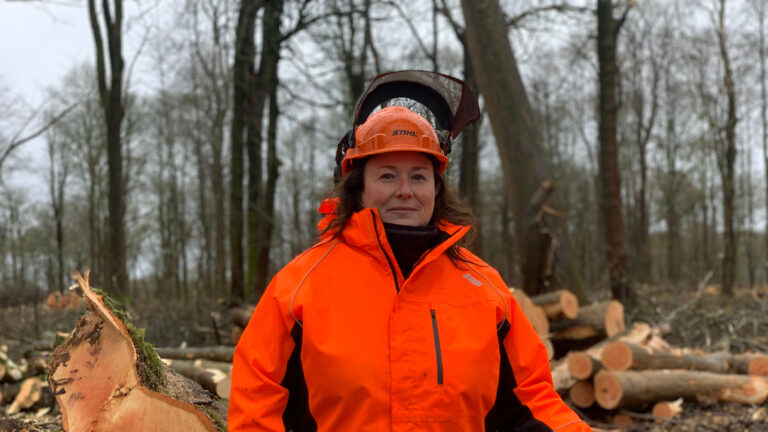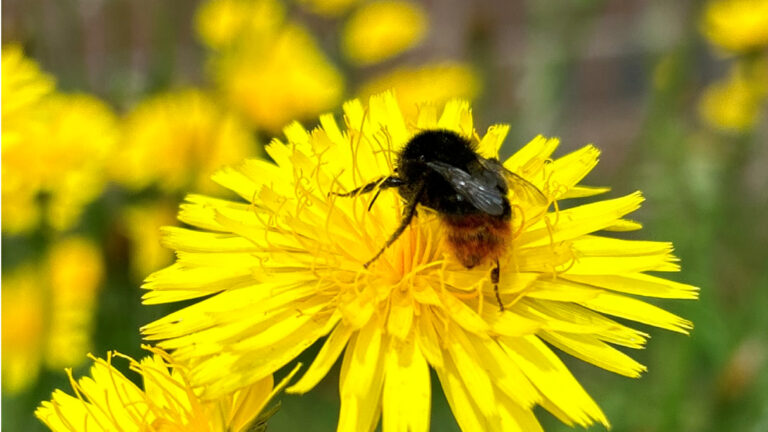Today is the International Day of Forests, an opportunity to celebrate and raise awareness of the importance of all types of forests. For Landmarc on the Defence Training Estate, the importance of forests and woodlands is primarily as a resource for military training, and their management can directly influence how troops train, but these woodlands are also important for a number of other reasons – for nature conservation and biodiversity, areas for recreation and access, space for health and well-being, carbon storage, combating climate change, managing water catchments and for economic and employment requirements. Judith Peachey, Forestry Harvesting and Arboricultural Manager, explains more.

“The Defence Training Estate comprises of 190,000 hectares, of which there are 20,000 hectares of woodland with an estimated 21 million trees present. Today we have a 60:40 mix in species type, with 60% coniferous species and 40% broadleaved species. Not all our forests are the same, we have a range of woodland and forest types, which gives a real mix of opportunities for different training scenarios as well as being able to explore a multitude of management techniques. From commercial plantations, mixed species woodlands, broadleaved woodlands, ancient semi-natural woodlands and plantations on ancient sites – the wealth of this resource is immense.
THE FIRST WOODLANDS
“The Forestry Commission planted the bulk of our woodlands in the 1950’s after the Second World War – before the land was ceded to the Ministry of Defence – to provide home-grown timber for the nation. These plantations were generally single species areas, with invasive cultivation methods used and in locations where, today, tree planting would be carefully considered. They can still be seen in the upland Sitka spruce forests we manage in Garelochhead, Sennybridge and Otterburn, for example, or in the lowlands, the pine forests in the Home Counties and in Dorset.
“These forests provide the green cover the military needs for training and harbouring large numbers of troops. They are also a good income generator, as the timber they provide is of a high quality and size that timber mills will pay a premium for. Nevertheless, they are susceptible to pest and diseases and catastrophic weather events and management of these locations today is very different to when they were first planted.
RE-STOCKING FOR RESILIENCE
“Following felling, we now have the opportunity to restock these locations with a mix of species, both coniferous and broadleaved. We can look at less invasive cultivation methods to protect the soil, different ways of protecting our young trees (without the need for acres and acres of tree tubes) and adapting our planting for warmer temperatures, changes in rainfall and perhaps can mitigate against the next wave of forest pests and diseases, as well as wildfires.
 Sitka spruce felling at Sennybridge, Wales.
Sitka spruce felling at Sennybridge, Wales.
 Sitka spruce felling at Otterburn in Northumberland after storm events.
Sitka spruce felling at Otterburn in Northumberland after storm events.

Plantation and mixed species restocking at Garelochhead, Scotland.
MANAGING MIXED WOODLANDS
“In areas such as Salisbury Plain or in the East, we have more mixed woodlands, with both pine and beech, oak and birch plantations co-existing with each other. These are generally found in smaller blocks, interspersed with open space such as grassland, heathland or agricultural ground. A lot more light gets to the forest floor, so we can see a wider range of woodland plants, scrub and understorey. These are treated in a lighter manner than the commercial works we undertake in our conifer plantations, using purpose built or smaller machinery or differing felling techniques, for extraction to avoid ground damage and working smaller area.
 Mixed woodland in the East region.
Mixed woodland in the East region.
 Woodland edges at Cinque Ports Training Area (CPTA).
Woodland edges at Cinque Ports Training Area (CPTA).
“In the South East, we also have pine plantations on or adjacent to heathlands. Whilst the predominant habitat is heathland, the scattered tall pines are prominent landscape features but also excellent habit for woodland birds. Originally, these locations would have been pine plantations, but careful felling over time has created this feature which forms a transition area or ‘ecotone’ between the open heathland and more dense plantations. An issue with opening up these spaces within the woodlands is that it also gives rise to invasive species – and rhododendron is a huge problem. It has been allowed to grow unchecked in places and now clearing this is an expensive and time-consuming operation.

Wooded heath in the South East region (Bourley).
 Invasive Rhododendron in the South West (Bovington).
Invasive Rhododendron in the South West (Bovington).
MANAGING BROADLEAVED WOODLANDS
“On Salisbury Plain, we also have areas of pure broadleaves – mostly beech. A broadleaved woodland is characterised by trees which do not have needles. Their leaves are broad and vary in shape, and most of them are deciduous. This is a complete change to the mixed woodlands, where we have a dark space under the canopy and very little vegetation under the trees. The thick leaves cover the ground and as no light can penetrate the forest floor, woodland plants and shrubs are missing. The edges and corridors adjacent to these areas provide the light and variety of species.
“In Cinque Ports Training Area (CPTA) in the South East region, the broadleaved woodland there is a completely different story. Made up primarily of ash, with oak, birch, hornbeam, lime and hazel, the forest floor is littered with regenerated trees and plants. Unfortunately, these woodlands have been decimated by ash dieback and now, as the ash is being removed, a whole new forest sward is growing.
 Ash infected with dieback Cinque Ports Training Area (CPTA).
Ash infected with dieback Cinque Ports Training Area (CPTA).
 Mixed broadleaved woodland Cinque Ports Training Area (CPTA).
Mixed broadleaved woodland Cinque Ports Training Area (CPTA).
MANAGING ANCIENT WOODLANDS
“We also manage areas of Ancient Semi-Natural Woodland (ASNW) on the training area. These are generally in small pockets, but by definition, are woodlands made up of trees and shrubs native to the site and where woodland has continually existed since 1600. They are incredibly important sites, both for their flora and fauna and their tree cover, and give a snapshot of what the countryside was like hundreds of years ago. Currently, we are restoring an area of ASNW at Garelochhead by removing invasive rhododendron as part of our Long Term Forestry Plan and commitment to the UK Woodland Assurance Scheme (certification) that we are part of.
 Rhododendron removal at Garelochhead, Scotland.
Rhododendron removal at Garelochhead, Scotland.
“This is by no means all the forest types that are found on the training estate, but give a flavour of what we manage on a daily basis. Forests are some of the richest habitats for biodiversity on the planet – for plants, animals and microorganisms. They provide an important regulating ecosystem by absorbing and storing carbon from the atmosphere to help mitigate global warming. They also provide shelter and fuel, enrich and conserve soils, protect water sources, mitigate air pollution, provide somewhere for recreation and on the defence estate – those vital locations for military training.
“As a forester and someone who spends a large part of my time working out in woods, what does it mean to me? For me, this is my opportunity to put back and restore these vital habitats, to plant more trees and future proof our woodlands for future generations, but also they are a place of calm and quiet, to regather my thoughts, to spend time in the fresh air and with nature and ……..just breathe.”



